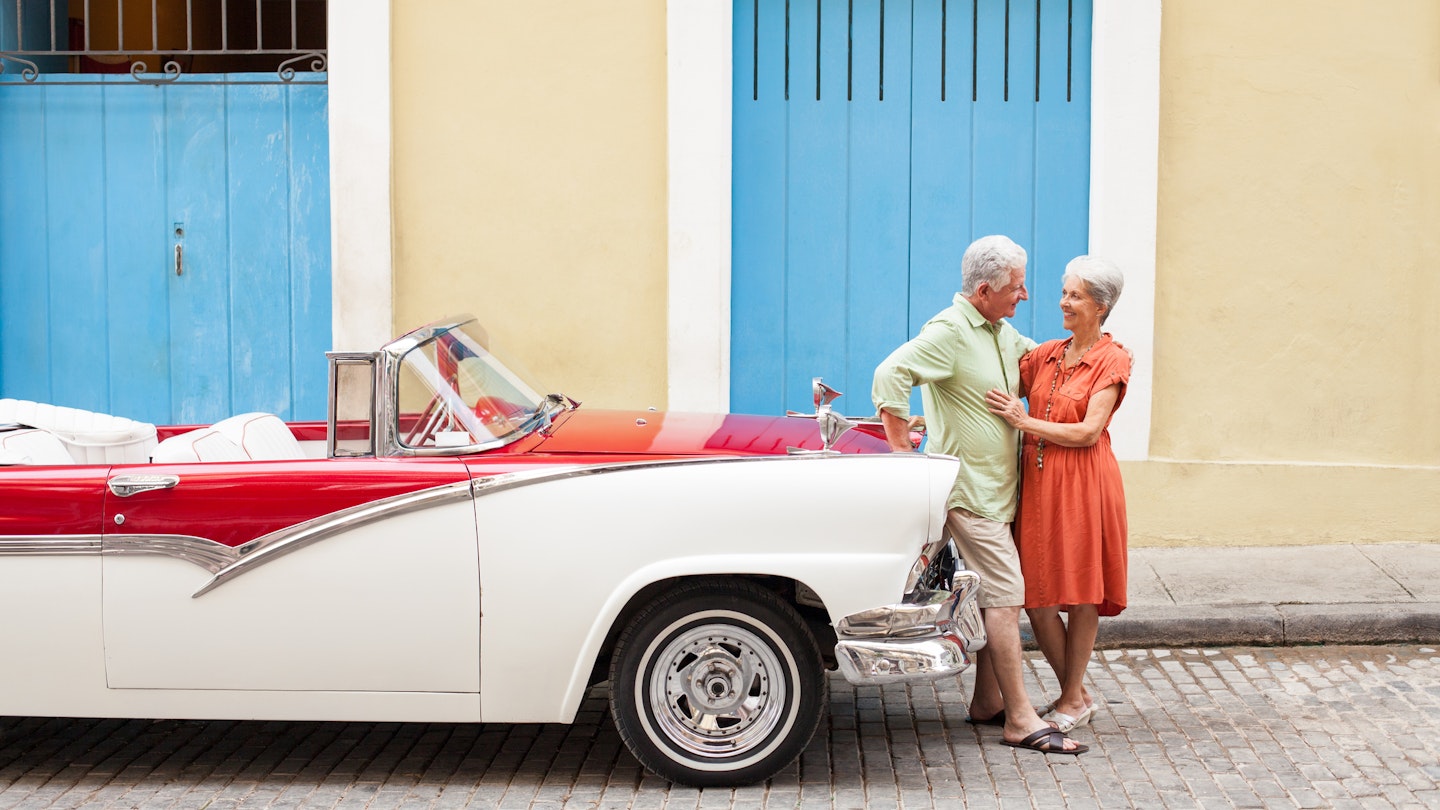Classic American Cars in Cuba – A Unique Adventure
Cuba might not have a lot in common with its US neighbor; however, in the six decades since the two nations cut economic ties, classic American cars have ironically become one of the country’s most recognizable symbols. Offering a vivid reflection of Cuba’s decadent 1950s heyday, these cars have also become a popular tourist attraction.
American Cars Have Survived for Decades Due to Their Owners’ Ingenuity
Cuba is one of the few countries in the world where most private automobiles are older than their owners. Due to the interminable US trade embargo, the streets of Havana and Santiago de Cuba are filled with a rich assortment of aging Buicks, Pontiacs, Oldsmobiles, and Plymouths that hark back to an age when Detroit still manufactured the planet’s most sophisticated motors. The continued functionality of these cars is a testament to the ingenuity of their owners. Starved of access to spare American parts and unable to afford modern replacements from Japan or Europe, Cubans have been forced to adapt and be creative. Many of their classic cars have been reconfigured and hybridized. What looks like a ’55 Chevy on the outside might well be hiding a Lada engine or salvaged parts from a Mexican truck beneath the hood.
Consequently, a large proportion of the “Yank tanks” that limp around the streets of Cuban cities look (and sound) as if they’ve already got one wheel in the scrap heap. However, not all of these vintage vehicles are in disrepair; some have been lovingly coaxed back to life.

Gran Cars: Super-Slick and Stylish Autos
Gran Car is a state-run taxi company that uses renovated American autos to ferry tourists around Cuba’s larger cities. Although they charge higher fares than regular taxis, the vintage vehicles are maintained in superb condition, boldly reflecting the lost grandeur of the 1950s. Forget about exploding engines or invasive body rust; Gran Cars are well-polished and effortlessly stylish.
When exploring options, you’ll be pondering whether to jump into a 1941 Ford convertible or a bubble gum pink Chevy Bel Air with leather seats. Gran Car’s vehicles are specifically used for city tours, with a congenial chauffeur dressed in a guayabera shirt and wide-brimmed straw sombrero doubling as a guide. These tours are particularly popular in Havana, where drivers fastidiously polish their automobiles in and around Parque Central. Expect to pay around €30 (US$34) for a one-hour tour that includes Havana’s main sights, such as an obligatory ride along the Malecon sea-drive, dodging giant waves.
Some cars can take you farther afield. You can tour Cuba for a week in a classic car with Cubautos Traveling, who can also arrange accommodations in casas particulares (private homestays) at stops along the way. Prices start at around €20 per day for the car and driver, plus an additional €70 per day for meals and accommodation for two.

A Unique Experience: Hailing almendrones (colectivos)
For travelers seeking a more authentic experience of Cuba’s confusing economy, a ride in a Cuban-style taxi is eye-opening. Known officially as colectivos but affectionately dubbed almendrones or máquinas by locals, these shared taxis run along fixed routes in major cities like Havana and charge economical fares in Cuban pesos. Almendrones are generally old American cars that haven’t experienced the upgrades of modern automobiles. We mean truly old. Stiff doors, belching exhausts, and a top speed of about 40km/h is standard for these metaphorical dinosaurs of Detroit.
Moreover, almendrones are primarily used by locals who can squeeze five passengers at a time. Tourists often don’t utilize them, as they may not understand the intricate mecánica (local way of doing things) needed to hail one, a peculiar and unwritten system of semaphore-like hand signals. However, with a bit of Spanish language skills and a Cuban friend willing to enlighten you, this unique experience is one you won’t forget quickly.

Most Ladas Are Now Private Yellow-and-Black Taxis
While it might appear that no street in Cuba lacks a shabbily romantic Pontiac with an oily muchacho behind the wheel, in reality, the most common car in Cuba is not the classic Chevrolet Bel Air or a curvaceous Buick; rather, it’s the less glamorous Russian Lada. Ladas were prestigious status symbols in the 1970s and ’80s when they were awarded to Communist Party workers for exceptional performance. In Cuba, where nothing is ever disposed of, many of these boxy Soviet-style vehicles remain functional.
Nowadays, a significant number of Ladas operate as private yellow-and-black taxis. They are prohibited from waiting at official taxi ranks outside tourist hotels, which are reserved for Gran Cars or modern state-owned Cubataxis. Consequently, Lada taxis roam the streets in search of fares. Tourists can comfortably hail one (no complicated signals needed) and negotiate a fare before getting in. In terms of quality, don’t expect seat belts or air conditioning. Nevertheless, while these Russian relics may lack comfort, they excel in durability—and affordability.
Ladas aren’t the only Fiat imitations in Cuba. Another remnant of the Cold War is the Polski 126, a car licensed by Fiat but manufactured by Cuba’s former allies in Poland. Diminutive yet culturally iconic, Cubans affectionately nickname the cheap, well-built Polski the polaquito (little Pole). The country reportedly claims an estimated 10,000 registered Polski owners. Despite the car’s charming image and remarkable fuel efficiency compared to the diesel-guzzling “Yank tanks,” it’s unlikely that you’ll ever see one featured on the cover of a glossy travel magazine.
Old British Cars Cruising the Streets of Cuba
While rarer than their American counterparts, the often-forgotten British cars from Cowley and Coventry are just as visually appealing. The most popular British models to make the journey across the Atlantic in the 1950s and ’60s—and endure—are the Hillman Minx Series I to Series IIIC, with a few Morris Minors and Triumph Heralds also making occasional appearances.
This article was first published on Oct 23, 2019, and updated on Feb 3, 2022.





